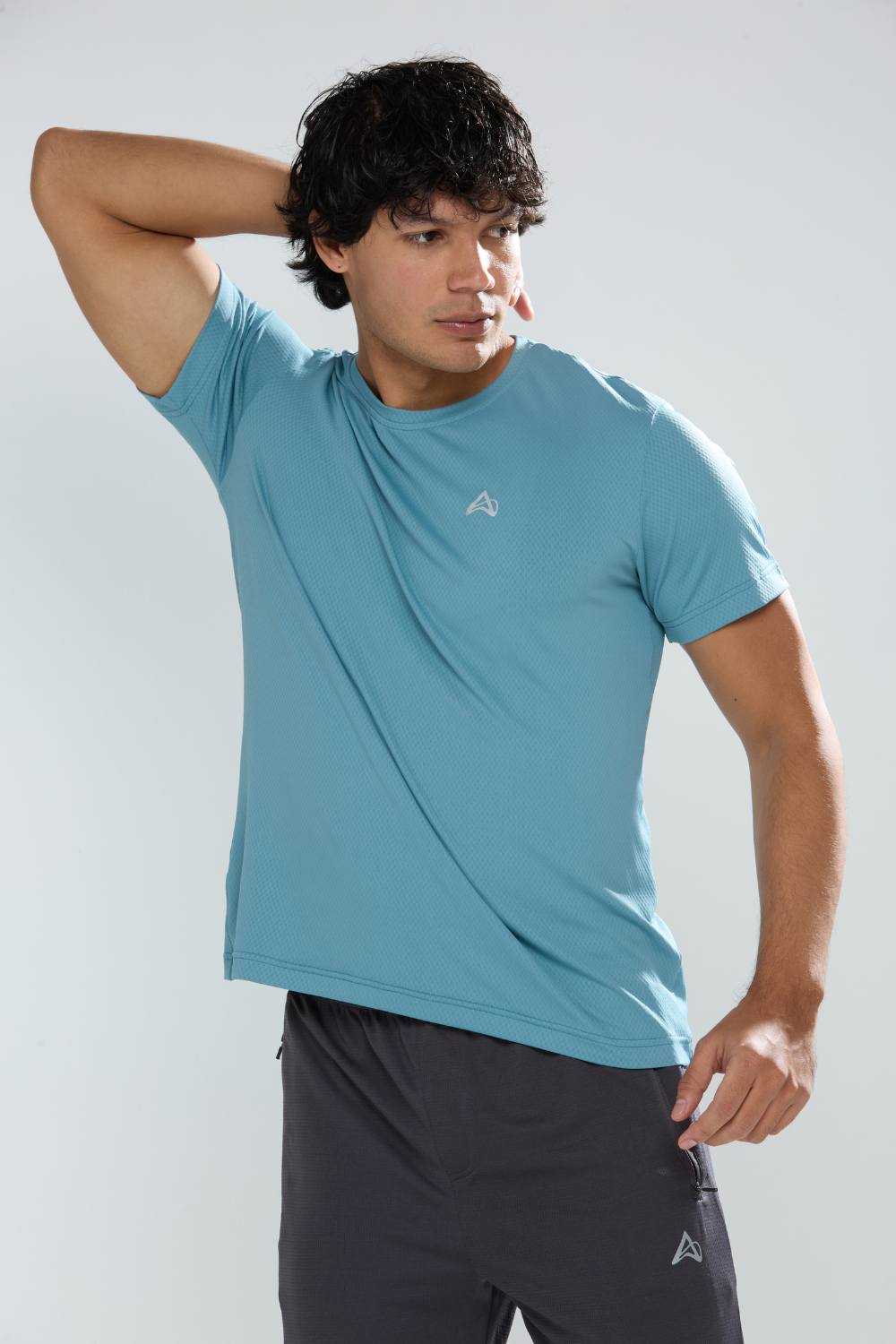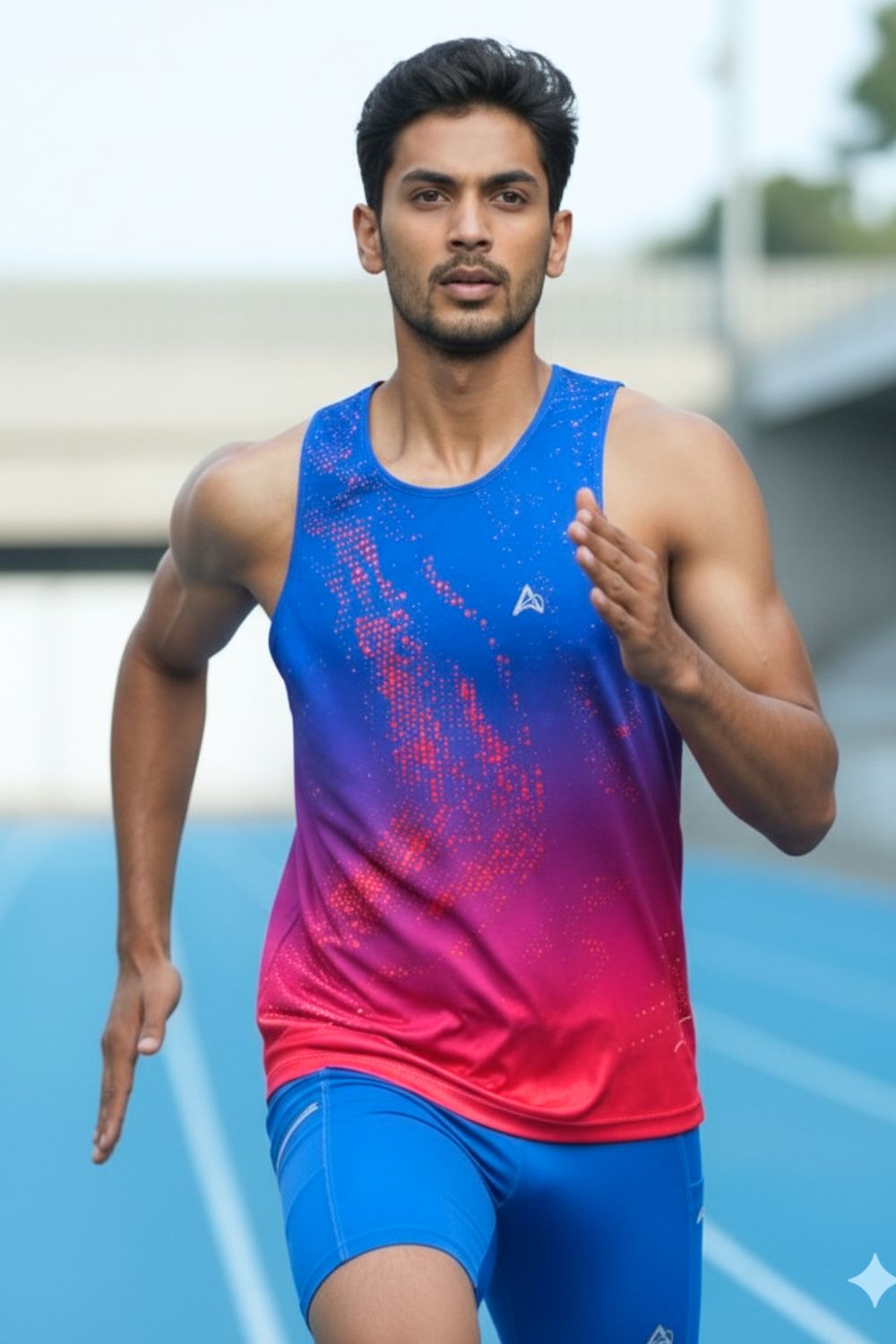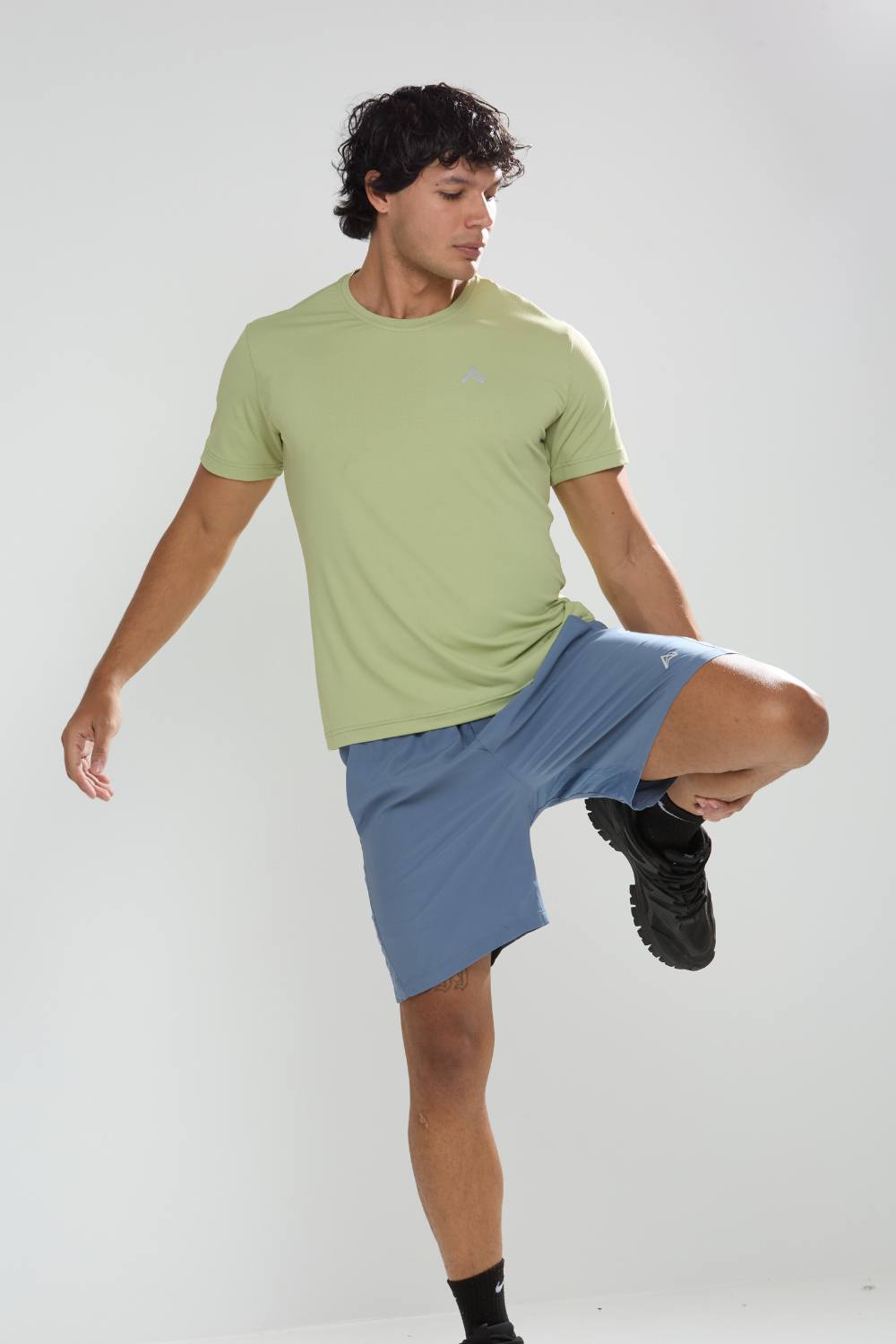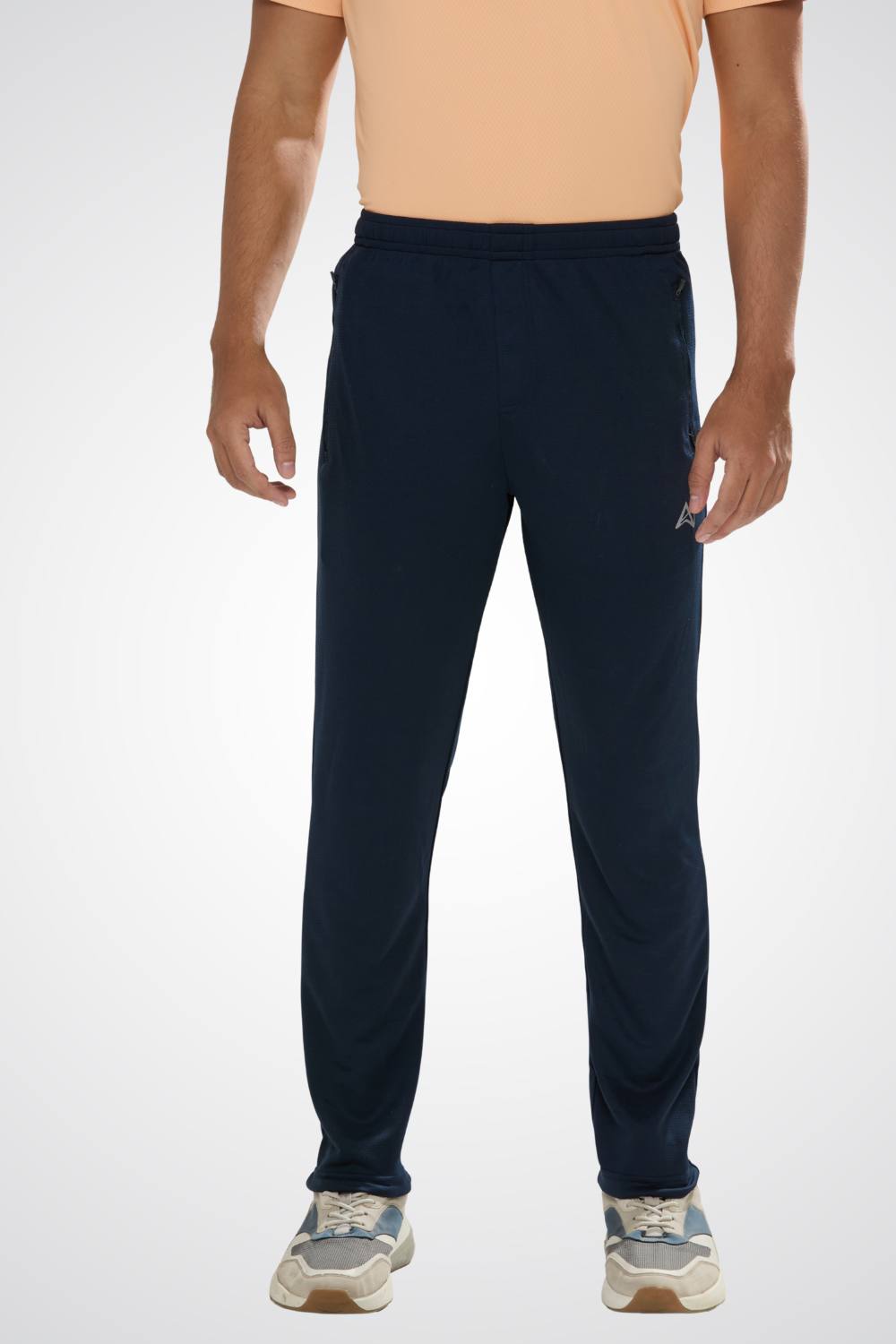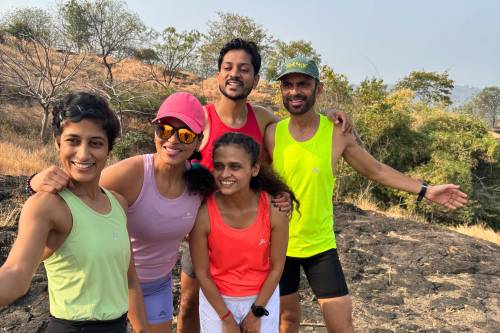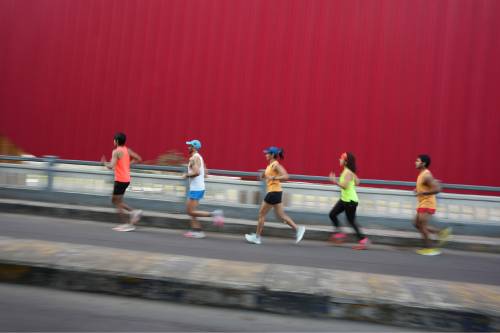Quick Listen:
Picture this: it's dawn in Mumbai, and the humidity hangs heavy in the air like an invisible fog. Your footsteps echo on the damp pavement, but within minutes, your shirt is soaked, not from rain, but from sweat that refuses to evaporate. Shift the scene to the rugged trails of the Western Ghats, where a surprise shower transforms dry dirt into treacherous sludge, testing every grip and seam of your gear. These scenarios capture the essence of running in India a pursuit that's surging in popularity, yet fraught with environmental hurdles that generic activewear simply can't handle. With scorching heat, oppressive humidity, and wildly variable terrain, Indian runners require specialized apparel that's engineered for resilience, not just style. This isn't mere convenience; it's a matter of enhancing performance while safeguarding health in one of the world's most demanding climates.
Tired of gear that slows you down? Chafing, soggy fabrics, and missing pockets kill your run's momentum. At Aguante, we're runners who get it. Our high-performance activewear features moisture-wicking fabrics, ergonomic designs, and smart storage to keep you focused. Shop Now!
The Surge in Running Amid India's Harsh Elements
Running has transformed from a fringe activity to a mainstream movement across India. Urban centers like Delhi and Bengaluru host packed marathons, while remote Himalayan paths draw ultra-trail devotees. This boom stems from an expanding middle class, heightened awareness of wellness, and a societal pivot toward active lifestyles. Globally, the sports apparel market stood at 217.43 billion USD in 2023, climbing to 226.23 billion USD in 2024, and is set to expand at a 4.05% compound annual growth rate from 2025 through 2035, ultimately reaching 350 billion USD. India plays a pivotal role in this expansion, bolstered by its vast population and escalating fitness enthusiasm.
Yet, the challenges for Indian runners diverge sharply from those in cooler Western regions, where most international sportswear originates. Intense summer heatwaves, prolonged monsoon rains, and a mosaic of surfaces from smooth city roads to jagged rural paths demand gear that's purposefully adaptive. Traditional cotton garments, comfortable in mild European weather, become burdensome in India's high humidity, trapping moisture and heightening risks like chafing or heat exhaustion. Proper apparel goes beyond aesthetics; it bolsters safety by mitigating dehydration, thermal stress, and slips on irregular ground, allowing runners to focus on their stride rather than their discomfort.
Recent data underscores this market's trajectory. According to a detailed analysis, the global market hit 207 billion USD in 2023 and is forecasted to grow at a 6.9% CAGR, hitting 400 billion USD by 2033. Within this, India's segment shows robust promise, with a projected 6.4% CAGR, reflecting local demand for tailored solutions.
Innovative Fabrics Tailored to India's Climate Demands
The evolution of running gear in India hinges on fabrics that combat heat and moisture effectively. Gone are the days when basic cotton sufficed; today's standards include advanced materials that wick sweat, promote airflow, and dry rapidly. A scientific investigation into garment impacts on athlete comfort tested five t-shirt variants, including cotton single jersey as a control, cotton-polyester blends, polyester single jersey, polyester mesh, and Tencel single jersey. Conducted under controlled exercise conditions, the study deployed sensors at key body points chest, back, abdomen, and waist to monitor heat and humidity, alongside subjective assessments of sensations.
Findings revealed that fabrics with superior air permeability and minimal thermal resistance, such as Tencel single jersey and polyester mesh, maintained lower microclimate temperatures and relative humidity. Specifically, Tencel variants yielded the lowest temperatures across regions, with statistically significant variances compared to cotton-based options (p-values ranging from 0.000 to 0.028). Polyester mesh excelled in humidity control, showing marked differences from denser fabrics (p=0.000 to 0.033). These properties prove invaluable for Indian runners navigating Mumbai's monsoons or Rajasthan's arid heat, where efficient moisture management can prevent overheating and enhance endurance.
Ventilation features, like targeted mesh inserts, have become essential in high-end running attire, facilitating better air circulation during intense efforts. Quick-drying technologies ensure gear rebounds swiftly from rain or perspiration, while antimicrobial treatments combat odor buildup in humid settings. Trail-specific innovations include hybrid shoes that offer robust traction on rocks yet cushioning for pavement, addressing India's diverse landscapes. Such advancements don't merely endure the elements they empower runners to perform at their peak.
Navigating Real-World Hurdles for Indian Runners
In coastal hubs like Mumbai and Chennai, runners contend with rain-drenched roads and stifling moisture levels that amplify every exertion. Generic cotton often leads to prolonged wetness, increasing irritation and fatigue. In response, many turn to blends incorporating Tencel and polyester, prized for their breathability and rapid evaporation. Conversely, in northern elevations like Himachal Pradesh or Uttarakhand, fluctuating temperatures from crisp dawns to warm midday necessitate layering systems that are durable against abrasion yet ventilated for ascents.
Domestic players, including Decathlon's Indian arm and nascent direct-to-consumer ventures, are pioneering blends attuned to local needs, emphasizing cost-effectiveness alongside quality. International firms are adapting too, rolling out lines optimized for tropical zones. This shift acknowledges a core truth: India's climatic and topographical variety defies universal designs, pushing for region-specific innovations that resonate with runner's lived experiences.
Overcoming Design Obstacles in a Diverse Nation
Developing apparel for India's runners presents formidable challenges. The nation's zones span humid shorelines, dry deserts, and frosty mountains, rendering a uniform approach impractical. Sourcing premium materials like Tencel or specialized polyesters inflates expenses in a budget-conscious arena. Durability must counter monsoon grime and trail wear without compromising lightness, which could otherwise retain heat.
Educating consumers remains key; many overlook how specialized gear elevates efficiency and averts harm, opting instead for inexpensive alternatives. The consequences of subpar equipment are stark: inadequate footwear invites blisters or twists on bumpy paths, while non-porous cloths exacerbate overheating in sweltering conditions. Brands mastering this equilibrium of ingenuity, accessibility, and awareness position themselves for success in a receptive market.
Capitalizing on India's Expanding Opportunities
Beyond a leisure trend, India's running surge signals lucrative prospects. The sports clothing segment alone tallied 90 billion USD in 2024, with athletic footwear at 65 billion USD. As affluence rises and events proliferate, appetite for environment-suited gear intensifies. D2C entities harness digital platforms and endorsements to engage communities, with visuals of Sahyadri trails or Bengaluru streets fueling purchases of functional, attractive products.
This momentum spills internationally. Comparable climates in Southeast Asia and Africa open export avenues for Indian innovations. Sustainability emerges as a cornerstone, with eco-conscious shifts favoring recycled synthetics and sustainable Tencel, aligning with global preferences. India stands poised as a testing arena for resilient gear, potentially exporting solutions worldwide.
Zooming in locally, India's sports apparel sector valued around 696 million USD in 2025, poised for 19.07% CAGR growth to 1,976 million USD by 2034. Running gear specifically hit 2.4 billion USD in 2024, eyeing 4.8 billion USD by 2033, underscoring specialized demand.
Envisioning India's Role in Gear Innovation
Looking ahead, India's running apparel landscape brims with potential, extending past basic cooling and drying. Intelligent textiles with integrated sensors might monitor vital signs like hydration or exhaustion, customizing support on the fly. Personalized elements, such as 3D-crafted soles for mixed terrains, loom large. Industry voices advocate ramped-up research focused on India's geography, promising leadership in activewear.
Indian runners aren't passively coping they're reshaping gear standards. From flooded urban avenues to lofty peaks, they demonstrate apparel's essential role. As companies respond, India may solidify as a dual force: a vibrant market and a cradle of breakthroughs, equipping global athletes against any climate's rigors.
Frequently Asked Questions
Which fabrics work best for running in hot and humid Indian weather?
Scientific studies show that Tencel single jersey and polyester mesh fabrics perform best in India's climate, maintaining significantly lower body temperatures and humidity levels compared to cotton-based materials. These fabrics excel in moisture management with features like targeted mesh inserts for ventilation, rapid evaporation capabilities, and odor-resistant treatments. Cotton-polyester blends also offer good performance while remaining cost-effective for budget-conscious Indian runners.
How big is the Indian running apparel market and what's driving its growth?
India's sports apparel sector is valued at approximately 696 million USD in 2025 and is projected to grow at 19.07% CAGR to reach 1,976 million USD by 2034, with running gear specifically hitting 2.4 billion USD in 2024. This growth is driven by India's expanding middle class, increased wellness awareness, proliferating marathon events in cities like Delhi and Bengaluru, and the unique demand for climate-specific gear that can handle India's harsh environmental conditions.
What makes running apparel suitable for India's climate different from regular sportswear?
Running apparel for India requires advanced moisture-wicking fabrics like Tencel and polyester mesh that combat extreme heat and humidity, unlike basic cotton which traps moisture and causes discomfort. These specialized materials feature superior air permeability, quick-drying technology, and antimicrobial treatments to handle India's diverse conditions from Mumbai's monsoons to Rajasthan's desert heat. Regular sportswear designed for cooler Western climates simply can't handle India's environmental challenges effectively.
Disclaimer: The above helpful resources content contains personal opinions and experiences. The information provided is for general knowledge and does not constitute professional advice.
You may also be interested in: Why Indian Marathoners Choose Aguante for Long Runs
Tired of gear that slows you down? Chafing, soggy fabrics, and missing pockets kill your run's momentum. At Aguante, we're runners who get it. Our high-performance activewear features moisture-wicking fabrics, ergonomic designs, and smart storage to keep you focused. Shop Now!
Powered by flareAI.co





